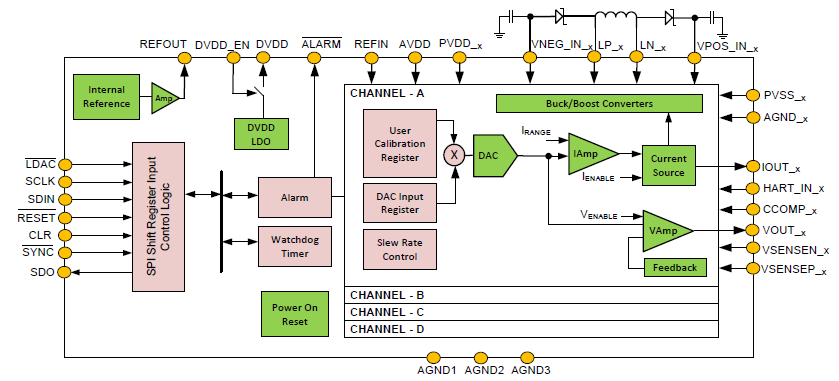By Majeed Ahmad, contributing editor
The digital-to-analog converter (DAC) is the latest component getting a makeover in the Industry 4.0 arena, and Texas Instruments' DAC8775 with integrated buck/boost converter just shows the drift.
That's because factory automation and process control engineers increasingly need to pack more channels into a smaller space due to the rising number of sensors. But it's becoming unmanageable because of greater power losses, which raise system temperature, reduce device reliability, and increase failure rate.
The I/O modules cannot squeeze more channels in a small space without significant design trade-offs because precision DACs lack thermal efficiency and diagnostic features. Moreover, the need for multiple power supplies catering to multiple I/O channels leads to larger board space.
What TI's 4- to 20-mA DAC does is combine the precision performance with a simpler power supply design. A single 12- to 36-V power supply accommodates all needed internal power supplies, and that saves cost as well as board area.
Furthermore, an adaptive power management system facilitated by a single power supply and integrated buck/boost converter lowers the power dissipation. TI's DAC8775 helps create an adaptive power management system by making an intelligent decision on whether to buck or boost the supply.
The DAC8775 chip employs a buck/boost converter to supply just the necessary power to the load. It dynamically adjusts the generated supply based on the current load on the 4- to 20-mA loop, and that creates a low-power system with a thermally optimized design.

The block diagram of the four-channel DAC8775 for PLCs, sensor transmitters, etc.
Reliability and thermal efficiency
How does DAC8775 enhance reliability in industrial control systems? For starters, it operates in the extended industrial temperature range of –40°C to 125°C without requiring the temperature de-rating.
Next, DAC8775 features alarms that monitor conditions such as open load, short circuit, overtemperature, and cyclic redundancy check (CRC). The diagnostic features are comprised of alarm action registers that provide designers with flexible options to manage equipment conditions.
TI is targeting its new DAC at analog outputs used in PLC modules, sensor transmitters, and industrial and building automation equipment. The DACs can be used to deliver either a voltage output or current output.
TI has also made available a four-channel analog output module reference design using the DAC8775 and the LM5166 high-efficiency synchronous buck converter. The chipmaker claims that this design solution dissipates less than 1 W in factory automation implementations.
Find out more about the DAC8775.
Advertisement
Learn more about Texas Instruments





